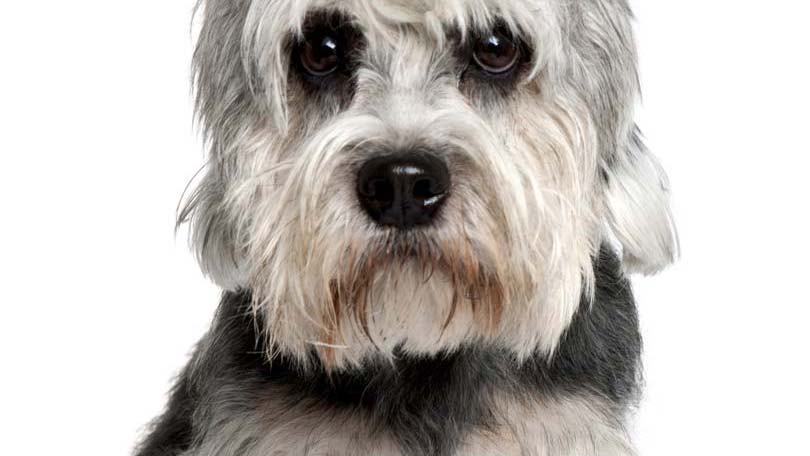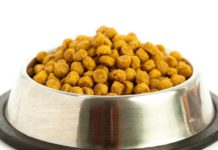
The last time ‘Fluffy’ went to the vet, he found a small lump on her right front foot that he told her owner to keep an eye on and to bring her in if it grew or changed in any way. Within the month it has doubled in size and Fluffy is now licking the small nodule until it bleeds. Her vet recommends removing it and sending the lump to histology to find out what it is before it grows anymore but the idea of putting the fourteen year old Miniature Poodle under anesthetic is a frightening thought.
Thankfully he says that Fluffy does not need to be fully anesthetized – he can either remove it under a local anesthetic so the area around the incision is without sensation or a nerve or regional block which will numb the entire limb by interrupting sensory nerve conductivity. He also recommends mild sedation that will keep her calm throughout the short surgery as well as help with any pain she may experience post-operatively. Lastly, he recommends a Pre-Anesthetic Screen – testing her blood and urine to see if there are any underlying conditions that may negate surgery as well as testing her liver and kidney function as these organs are put under significant stress during the metabolizing, or breaking down, of the molecules of the anesthetic during recovery.
The surgery is entirely successful. With Lidocaine numbing any pain around the surgical site, Fluffy barely noticed the doctor removing the lump and within of couple of hours of dropping her off, her owner is called to come pick her up. She sleeps for most of the day but wakes up around dinner time bright-eyed and busy-tailed. A few days later, the vet calls and says he got the report back on the lump and it is not good news. The lump is cancerous and a larger area of skin around the incision needs to be removed as the margins were not wide enough to be clear of the diseased tissue.
So Fluffy is booked in the following day for surgery and this time she is made to follow pre-operative procedures – no food for twelve hours prior to surgery.
The vet checks Fluffy’s heart rate, listens to her breathing, feels her lymph nodes and gives her a general once over to make sure she is as healthy as to be expected before continuing with the procedure. He also takes x-rays of her chest and abdomen to make sure the cancer has not metastasized, spreading to other organs like the lungs or liver. They come up clear so he decides to continue with the procedure.
Once that is done, she is given an injection of sedative under her skin or subcutaneously. The three types of injections are subcutaneous (sub-Q), intramuscular (IM) and intravascular (IV). Sub-Q is given below the skin which allows for slow absorption into the blood stream. It usually takes around twenty minutes for the sedative to start to take effect and as they hurt the least, most injections given to an awake animal are administered this way. IM are into the muscle and although they have a much faster absorption rate then the Sub-Q, they are painful and rarely administered to an animal not under some type of sedative or anesthetic. IV injections are directly into the vein and are usually given through a catheter that has already been placed in one of the patient’s four legs. This is an almost instantaneous way for a drug to be administered and injectable anesthetics are given this way.
The pre-anesthetic sedative is given to relax her throughout the procedure as well as help with the anesthetic process – less anesthesia is needed to ‘knock her out’ if she is already sedated. It also helps the animal wake up smoothly. Like humans, every animals recovers differently from anesthesia, sometimes thrashing about or vocalizing. The pre-anesthetic sedative negates much of that involuntary response, lowering the stress level considerably.
While one veterinary assistant gently restrains her, another injects her catheter with a short-acting anesthetic. Often the barbiturate Pentophal is used as well as combinations of Ketamine and Valium or a newer drug on the market called Propofol. In an older or sickly dog, Propofol is the drug of choice as the load put on the liver and kidneys to metabolize the anesthetic is nominal. Whichever drug is given via the I.V. catheter, only enough is administered to temporarily anesthetize her. This allows an endotrachael tube to be placed in her throat so oxygen and allowing an inhalant anesthetic such as Halothane, Sevoflurane and Isoflurane to be administered. The trach tube is also important as it keeps the trachea or windpipe isolated from the stomach in the event of vomiting – a complication of anesthetic procedures in both humans and animals. As there is no gag response while anesthetized, the stomach contents are breathed into the lungs causing aspirated pneumonia – often fatal in the early days of veterinary medicine. Today, trach tubes are mandatory no matter how short of a time an animal is under anesthetic.
Once the trach tube is in place, Fluffy is hooked up to a rebreather system which allows oxygen and the inhalant anesthetic that the vet feels is best for this patient. Halothane is an older drug but very safe, easy to regulate and has analgesic or painkilling properties that help keep the patient comfortable during the recovery period. Isoflurane is considered a safer anesthetic as it is easier for the body to metabolize but it is more difficult to regulate and has no analgesic properties meaning another drug must be administered for the patient to remain comfortable. Since it rapidly enters and exits the brain, the patient ‘goes under’ and wakes up quickly which is highly desirable in older animals where the vet wants them under anesthetic the shortest possible time. Sevoflurane is newer still and causes even less depression of the patient’s heart rate and respirations then Isoflurane. However, many vets have not switched to it as the cost is prohibitive as is educating themselves and their staff on a new anesthetic.
Once Fluffy is comfortably settled with the general inhalant anesthetic on board, while one staff member quickly preps the area for surgery, another will her hook up to the monitoring equipment. These include a Doppler to monitor her blood pressure, a Pulse Oximeter to monitor her heart rate and oxygen absorption in her tissues as well as a thermometer to monitor her temperature it will quickly drop as anesthesia disrupts the brains ability to regulate body temp. Surgical tables have warm water heating pads to keep Fluffy warm and often for long surgeries or with small, older or unhealthy patients, hot water bottles will be placed against their torso. Her heart rate will also be checked frequently with a stethoscope or by the pulse in her femoral or carotid artery. On a small dog like Fluffy, it is also easy to feel her heart beat through her chest wall – an excellent way to monitor heart rate.
Like human hospitals, patients are continuously monitored to make sure their vitals stay within established parameters. The level of inhalant anesthetic is adjusted throughout the procedure as it is a fine balance between over anesthetizing and keeping the patient comfortable and pain free. Fluffy’s is not painful and has little stimulation so the level of anesthetic administered is limited. However, in deep abdominal or orthopedic surgery, the pain and stimulation is much higher so more anesthetic must be administered.
Even though Fluffy is fourteen, she is a healthy dog and at the ideal weight for her size. Many diseases adversely effect how well an animal will do under anesthetic and overweight animals are more difficult to stabilize. Anesthetic is fat-soluble and the more anesthetic that is used or the longer the surgery, the more is absorbed into the body. This delays recovery significantly and an overweight patient may take several days longer to seem their normal self then a dog at their ideal weight.
Underlying health conditions will have a negative effect as well. Without the pre-anesthetic blood and urine tests, it would have been a guess as to Fluffy’s physical condition and ability to recuperate post-op.
Thankfully, Fluffy’s recuperation is without hiccup and she is allowed to go home four hours after the procedure. Because of her overall good health and the quality of care she received while in the hospital, her recovery is short and uneventful. The following day she is insisting on her usual walk around the block and she is not bothered by the bandage.
Veterinary anesthesia used to be a risk but not any more. With better anesthetics, superior monitoring equipment and a greater understanding of the canine physiology, veterinarians are successfully performing lifesaving surgeries on animals that even two decades ago would not have been possible. Anesthetic deaths in young, healthy animals are almost unheard of and most often there was a rare underlying condition that was not something animals are regularly tested for such as Feline Immunodeficiency Disease (FIV) in cats.
Two days later, the vet calls again. This time all the diseased tissue is removed and Fluffy’s cancer is now a thing of the past. Her clean bill of health gives her a reprieve from anymore hospital visits until her next regular check up in six months time – good news for both Fluffy and her owner!





